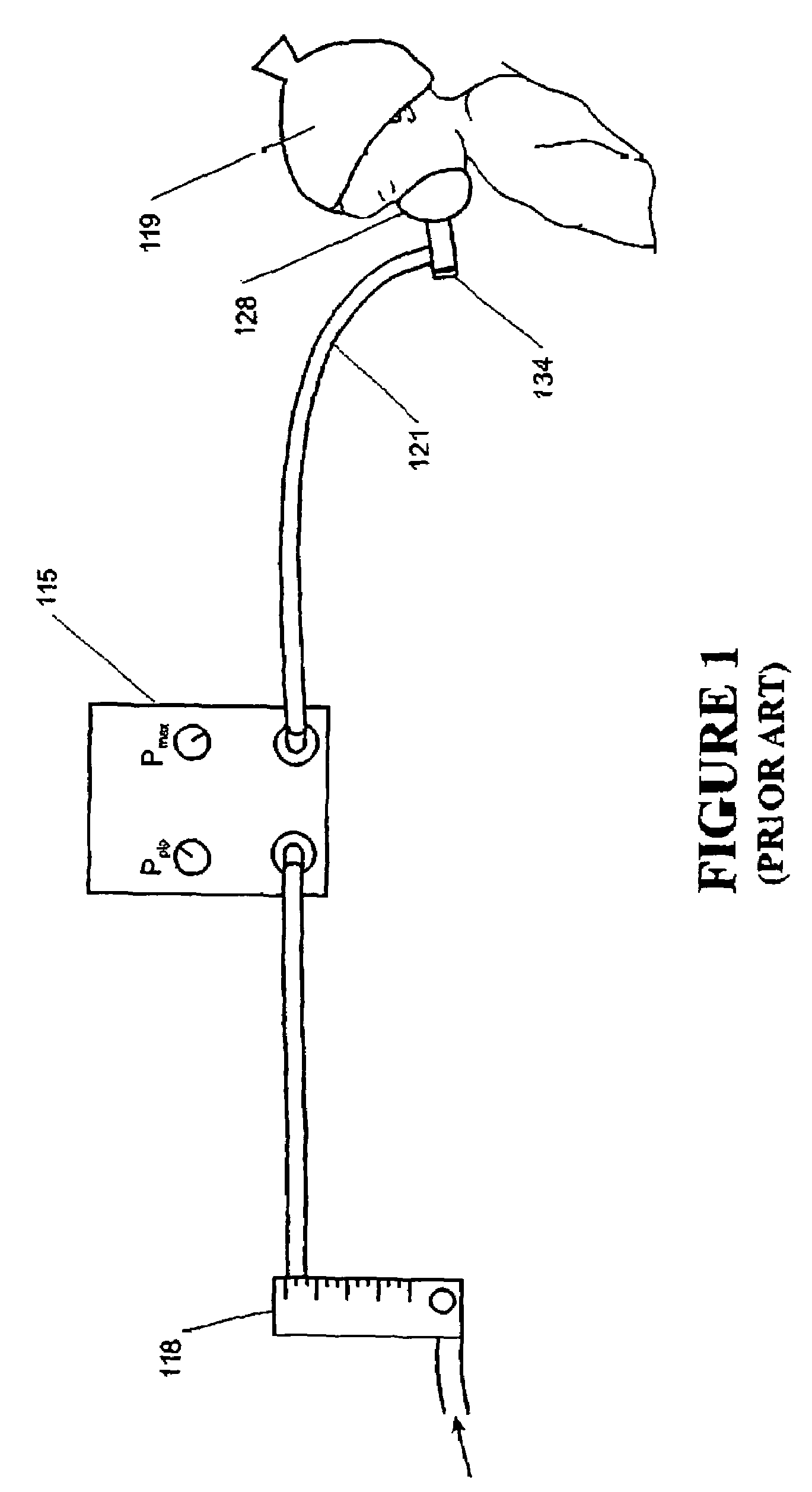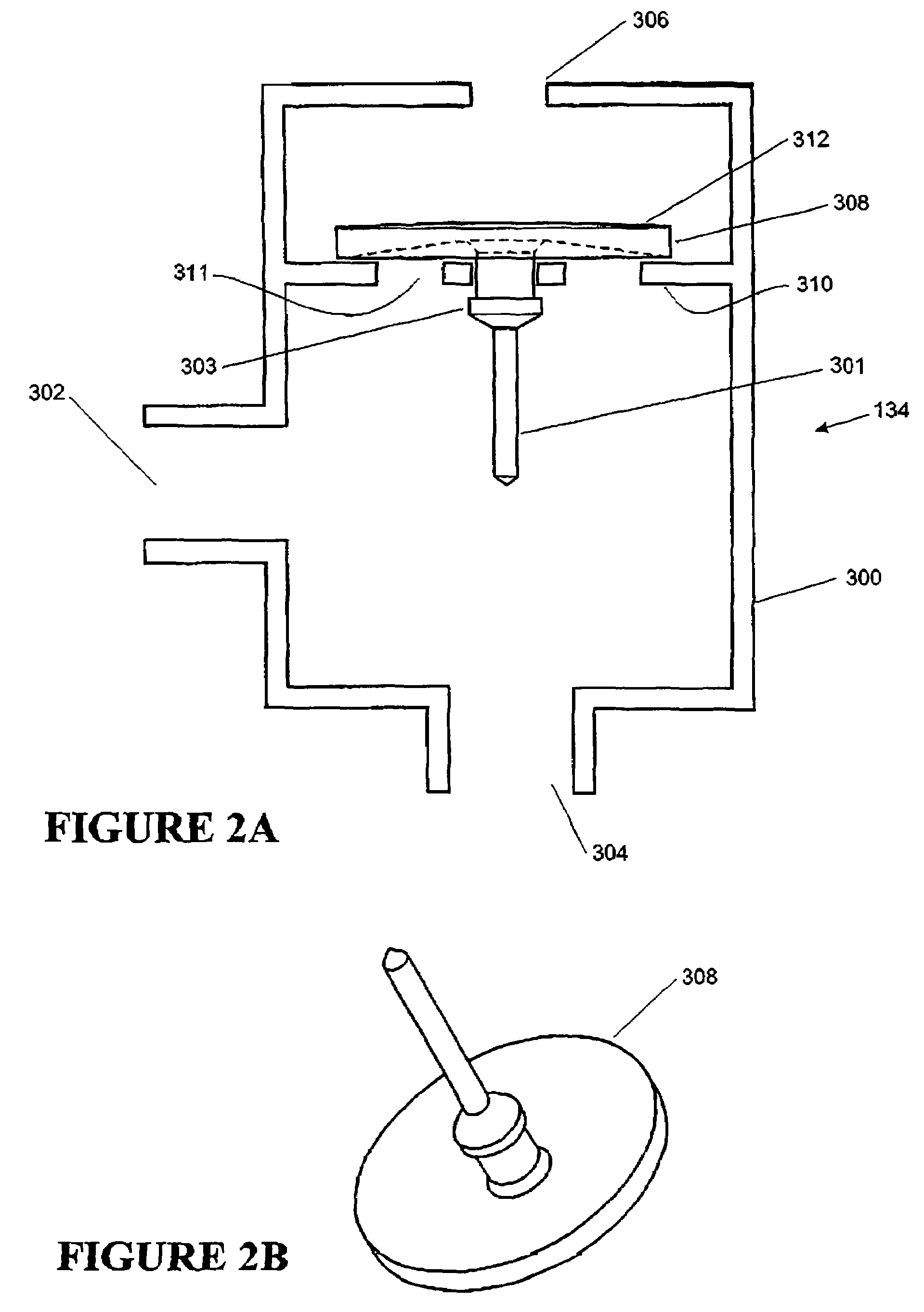Breathing assistance apparatus
a technology of pressure regulator and breathing assistance, which is applied in the direction of mechanical equipment, valves, operating means/releasing devices, etc., can solve the problems of inability to generate enough pressure to open the lungs, difficulty in neonates opening and keeping them open, and tireing quickly
- Summary
- Abstract
- Description
- Claims
- Application Information
AI Technical Summary
Benefits of technology
Problems solved by technology
Method used
Image
Examples
Embodiment Construction
[0042]The present invention includes a connector for resuscitating an infant or neonate. The delivered pressure is varied between Peak Inspiratory Pressure (PIP) and Peak End Expiratory Pressure (PEEP) by the occlusion of the PEEP outlet. The PEEP outlet may either allow variable PEEP, by adjustment, or substantially flow independent fixed PEEP using a novel umbrella valve. A duck billed valve is included for suctioning of surfactant delivery during resuscitation. The connector is adapted to one handed use. The fixed PEEP valve avoids the need for adjustment as flow changes and provides more effective therapy.
[0043]Referring now to FIG. 1 in which a typical application is depicted. A Positive End Expiratory Pressure (PEEP) system is shown in which an infant 119 is receiving pressurized gases through a nasal mask 128 (or endotracheal tube or other interface as are shown in the art) connected to an inhalatory conduit 121, preferably for resuscitation. Either the mask 128 or the inhala...
PUM
 Login to View More
Login to View More Abstract
Description
Claims
Application Information
 Login to View More
Login to View More - R&D
- Intellectual Property
- Life Sciences
- Materials
- Tech Scout
- Unparalleled Data Quality
- Higher Quality Content
- 60% Fewer Hallucinations
Browse by: Latest US Patents, China's latest patents, Technical Efficacy Thesaurus, Application Domain, Technology Topic, Popular Technical Reports.
© 2025 PatSnap. All rights reserved.Legal|Privacy policy|Modern Slavery Act Transparency Statement|Sitemap|About US| Contact US: help@patsnap.com



